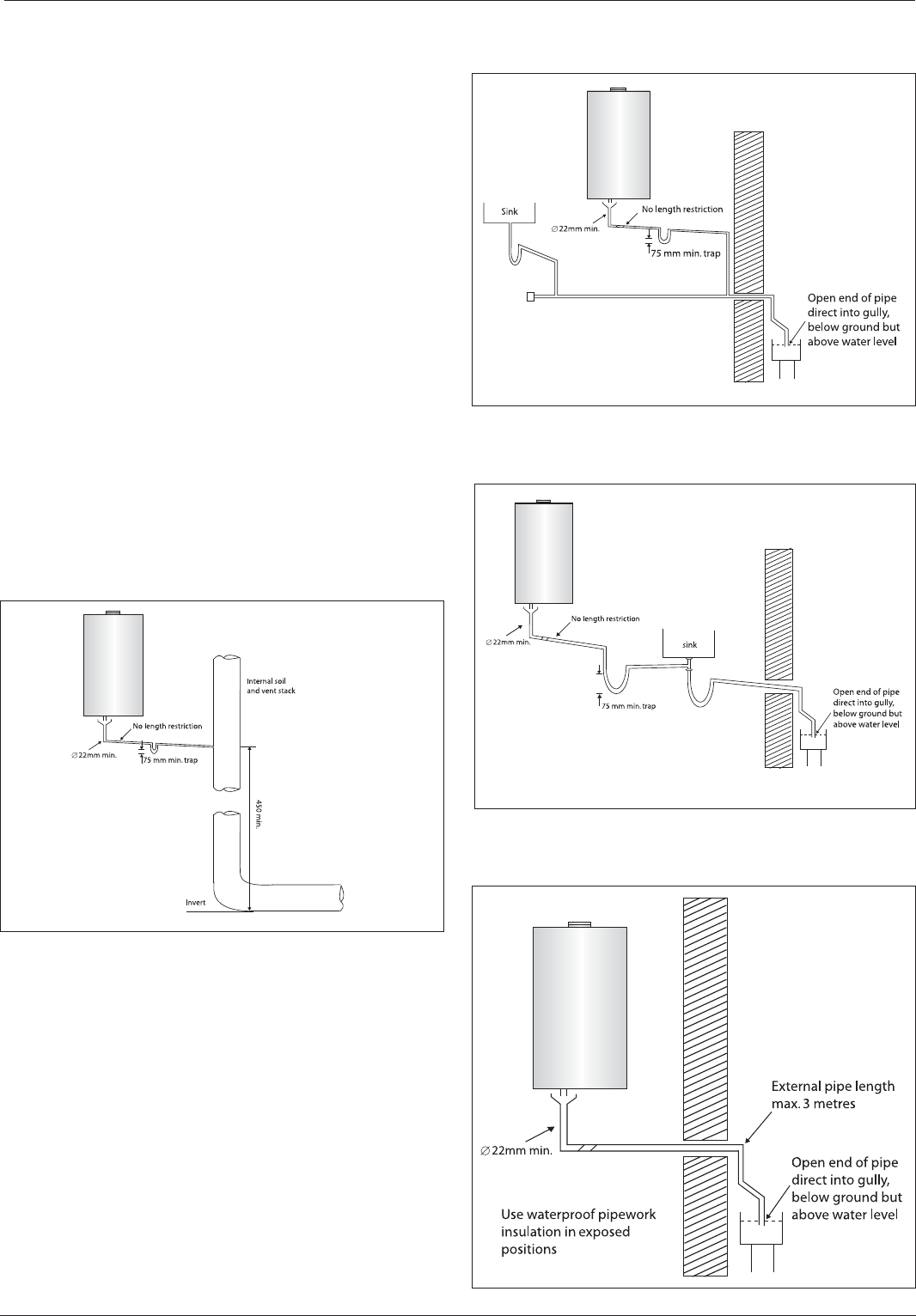
13
installation
2. External termination of condensate drainage pipe via internal
discharge branch (e.g. sink waste) and condensate trap.
3. External termination of condensate drainage pipe via internal
discharge branch (e.g. sink waste - proprietary tting).
4. External termination of condensate drainage pipe via condensate
trap
Condensate Discharge
The condensate discharge hose from the boiler must have a
continuous fall of 2.5
o
and must be inserted by at least 50mm into
a suitable acid resistant pipe - e.g. plastic waste or over ow pipe.
The condensate discharge pipe must have a minimum diameter of
22mm, must have a continuous fall and preferably be installed and
terminated to prevent freezing.
The discharge pipe must be terminated in a suitable position:
i) Connecting into an internal soil stack (at least 450mm above the
invert of the stack). A trap giving a water seal of at least 75mm
must be incorporated into the pipe run, there also must be an air
beak upstream of the trap.
ii) Connecting into the waste system of the building such as a
washing maching or sink trap. The connection must be upstream
of the washing machine/sink. If the connection is downstream of
the waste trap then an additional trap giving a minimum water
seal of 75mm and an air break must be incorporated in the pipe
run, as above.
iii) Terminating into a gully, below the grid level but above the water
level
iv) Into a soakaway
Note: If any condensate pipework is to be installed externally then
it should be kept to a minimum and be insulated with a waterproof
insulation and have a continuous fall. The total length of external
pipe used should not exceed 3 metres.
Some examples of the type of condensate terminations can be found
below.
1. Internal termination of condensate drainage pipe to internal
stack.
trap
trap


















